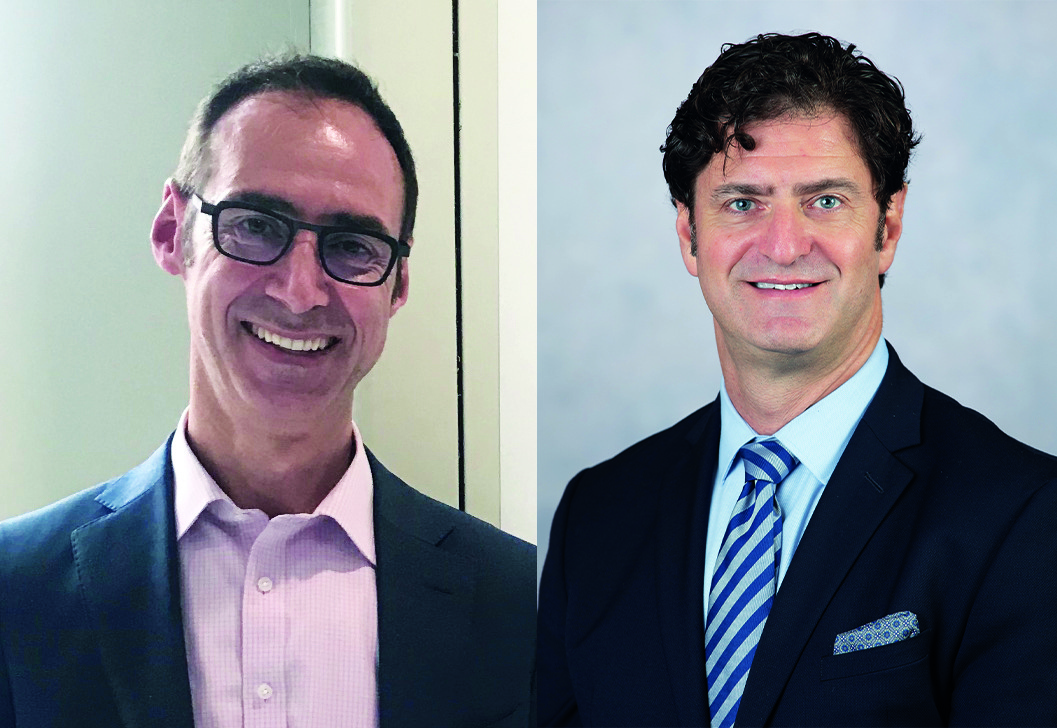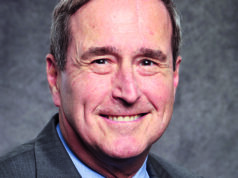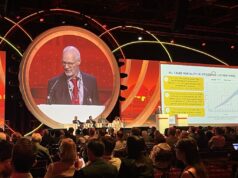
This advertorial is sponsored by Tampa General Hospital.
Early on, Jean Bismuth, MD, acquired a passion for vascular surgery from a world-class source. Back in his Danish homeland, he was drawn into the specialty as an intern by pioneering vascular surgeon and former European Society for Vascular Surgery (ESVS) President Henrik Sillesen, MD. Under Sillesen at the University of Copenhagen, he quickly acquired a keen awareness for how innovation drives the vascular field forward and the part it plays in improving patient outcomes. Add into the mix a keen sense for the important role played by multidisciplinary teamwork, and key elements of Bismuth’s approach to vascular surgery come into focus.
As Tampa General Hospital (TGH) and the University of South Florida (USF)’s new chief of vascular surgery, those core values are set to perform an important function. TGH’s Heart & Vascular Institute (HVI)—of which the Division of Vascular Surgery is a central plank—is growing and evolving. Long-standing vascular chief Murray Shames, MD, was appointed TGH chief of staff and USF chair of surgery. So Bismuth takes over at a critical juncture.
“It was clear to do justice to the growing division and the HVI that we needed to bring in a new leader—somebody with experience, an excellent clinical reputation, an innovator with an established research portfolio, and a commitment to our education mission for our residency program,” says Shames, who has been connected to TGH for three decades and division chief since 2017. “Dr. Bismuth brings national and international recognition to the division and the Department of Surgery. It was important that we find somebody with that experience who we could trust with a division that means a lot to me personally from an emotional and career development perspective. I have been part of USF and TGH for 30 years and so it was important to pass that baton to an established leader who would take it to the next level, beyond what I have been able to do.”
At TGH, the HVI service line model has evolved from a legacy academic department into its current guise: more collaborative and multidisciplinary.
For his part, Bismuth, in post two months now, is clear about the direction of travel. “What is necessary to make the TGH HVI successful? It’s really innovation in care,” he says. Bismuth doubles up as the HVI Vascular Center of Excellence medical director. He has wasted little time setting his vision in motion.
“The willingness here to have an open mind about how to build and how to structure this model so that the three units that belong under the HVI are successful is actually imperative,” Bismuth reflects. “One of the things we want to do is innovate in the therapies we deliver. Already, I have been reaching across platforms. Part of the vision is to demonstrate that there is a mission across borders. We have to break down these barriers between the specialties. Working across specialties really has defined my career.”
Bismuth came to Tampa from Houston. There, he was an associate professor of surgery at Houston Methodist, landing in Texas to complete his fellowship. Initially expecting to move back to the East Coast soon after finishing his training, Bismuth stuck around. Houston holds significant vascular surgical history, the home base of luminaries such as Michael DeBakey, MD, and E. Stanley Crawford, MD.
He credits much of his technical acumen to his time there, crediting a somewhat unlikely source for his education. “My grounding in terms of skill came primarily from one of my cardiac mentors there, Dr. Michael Reardon ,” he says. “A lot of the techniques I use today, they come from him. It’s a little ironic that cardiac surgery taught me vascular surgery!”
That pioneering spirit of Houston vascular surgery sharpened a natural gravitation toward innovation and collaboration. “It’s a big center there,” Bismuth explains. “It opened some doors for me, particularly with respect to my attributes. I work well across specialties. We had the good fortune of having a structure around the Heart and Vascular Center, which really allowed us to work well across specialties, so much so that I would say that probably 90%—if not more—of all my research were collaborations with cardiology in particular, and also cardiac surgery. It made for a very fruitful interaction. From an innovation standpoint, because it’s such a large medical center, it attracts a lot of medical startups, and I worked with a lot of new companies during my time there.”
Bismuth covers the full range of vascular disease but has particular clinical and research interests in aortic dissection, peripheral arterial disease (PAD) and central venous pathologies. That innovative spirit found early purchase during his days in Houston, where the specter of aortic dissections initially stumped him.
“Initially, I didn’t understand aortic dissections, and I don’t mean technically but from an imaging standpoint—they really perplexed me, by how they behaved and how they evolved,” he says. “As I worked across specialties, with cardiology, we started to develop specific imaging techniques for better understanding of these dissections.”
In the immediate term, Bismuth has his sights set on defining how the TGH HVI vision will translate on the ground in Tampa for the community at large. Longer term, he wants TGH to be an extension of what is a rapidly growing city. “It’s about being at the forefront of the trials, making sure industry is interested in bringing trials to Tampa,” he says. “I also think it is important that we have physician-driven innovation. And we have a unique structure in that we have CAMLS [Center for Advanced Medical Learning and Simulation], a fantastic 30,000-square-foot training location that almost nobody else in the country has. We have a common vision here in making Tampa an education destination.”
For Shames, stability has been a defining facet of his TGH department since he first landed 30 years ago. “We have not had a lot of turnover at the helm of vascular surgery here during my time, and I’m looking forward to a long career and legacy that Dr. Bismuth is going to leave behind,” he says.
“Tampa itself is evolving,” adds Bismuth. “Its expansion and what it promises is second to none. Migration to Tampa is huge. There is a general sense of innovation in the whole city.”












